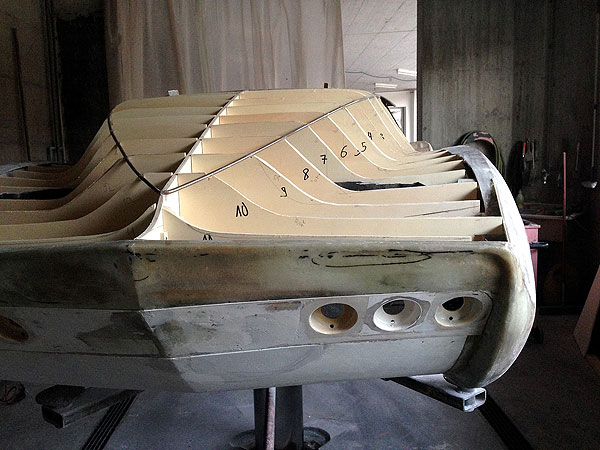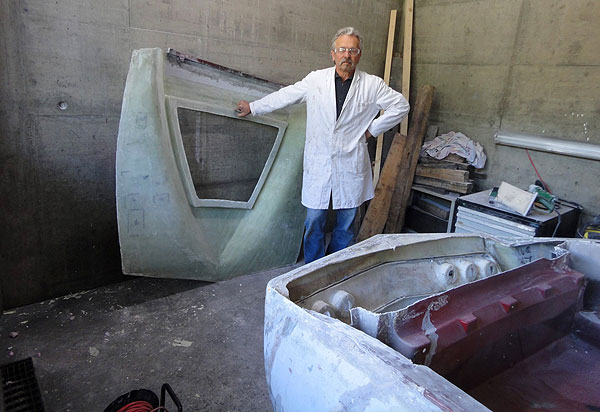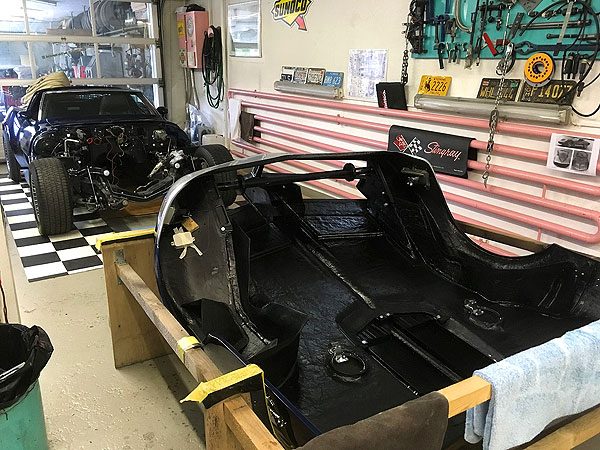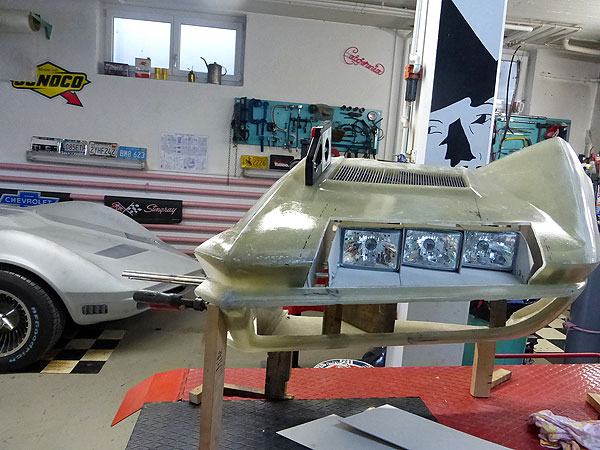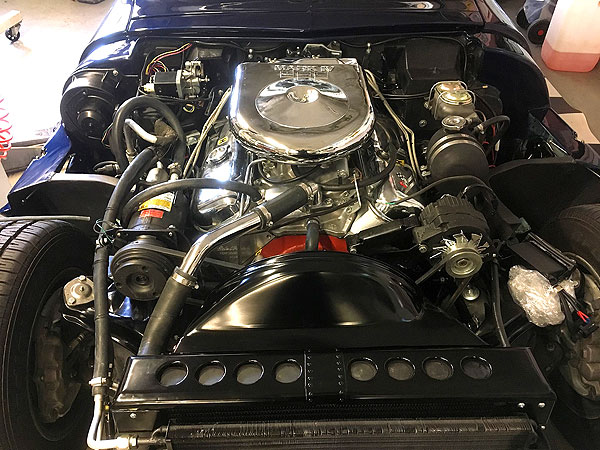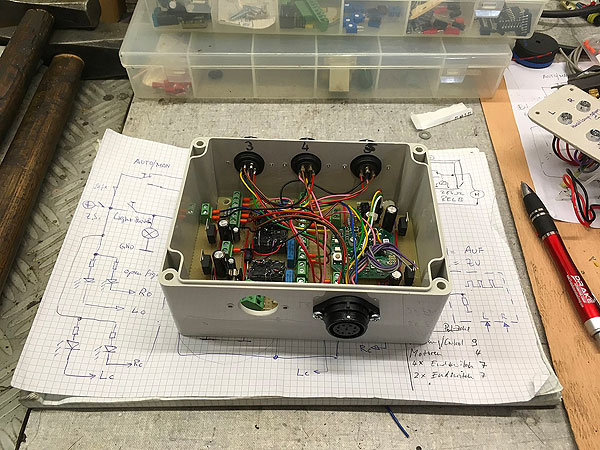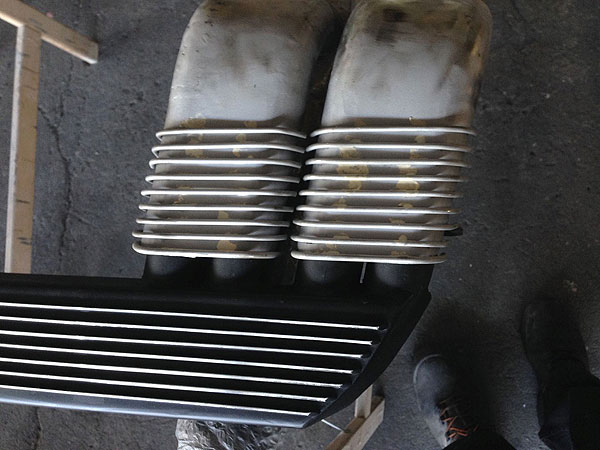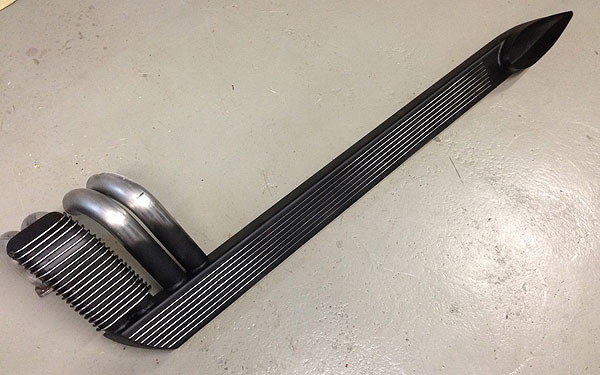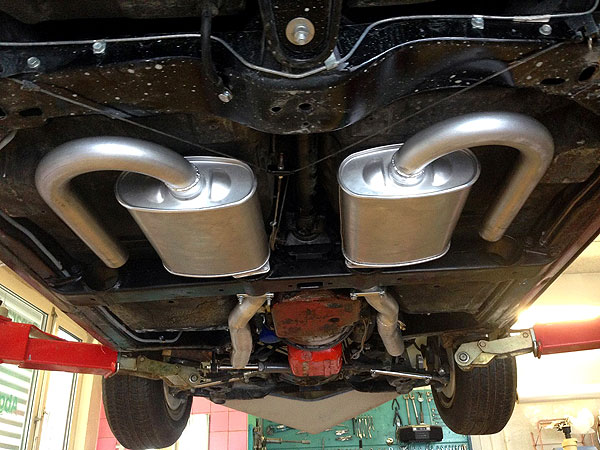Hanspeter Boehi from Muenchenstein, Switzerland builds a spot-on replica of the most important concept Corvette ever!
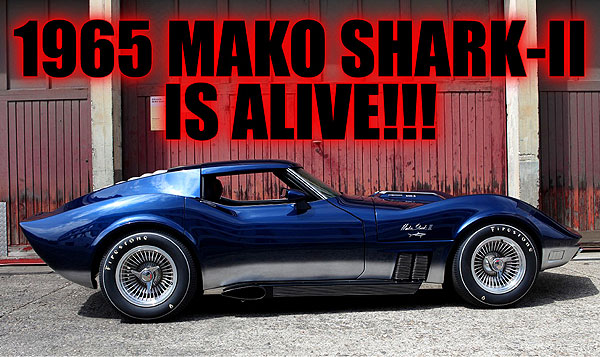 Dateline 2-4-18, Photos by Hans Peter Bohi and GM Archives – This article first appeared in the April 2018 issue of Vette Magazine.
Dateline 2-4-18, Photos by Hans Peter Bohi and GM Archives – This article first appeared in the April 2018 issue of Vette Magazine.
The 1965/1966 Mako Shark-II set down the basic look and proportion for all Corvettes going forward. To understand the Mako Shark-II, we have to get into the mind of GM VP of Design, Bill Mitchell. His task was to see the future and then pull it into reality through his designers and stylists. Mitchell didn’t “draw” a single line of either the Sting Ray or Mako Shark-II, but he knew what he wanted.
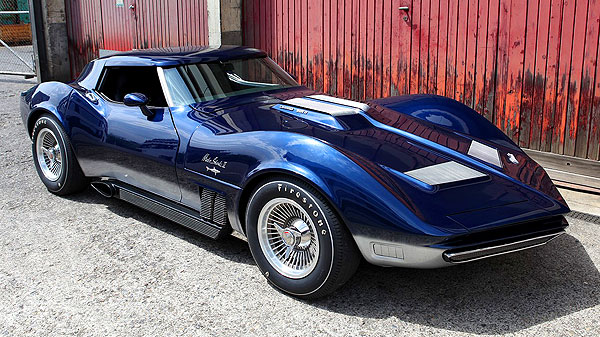
Here’s how Bill commanded his troops; he wanted, “…a narrow, slim, center section and coupe body, a tapered tail, an all-of-a-piece blending of the upper and lower portions of the body through the center (avoiding the look of a roof added to a body), and prominent wheels with their protective fenders distinctly separate from the main body, yet grafted organically to it.”
Mitchell was almost there with the 1962 Monza GT. After the design was nailed down, a full-size, non-running version was built and shown to management in March 1965. It was unanimous; the Mako Shark-II HAD TO BE the next Corvette.
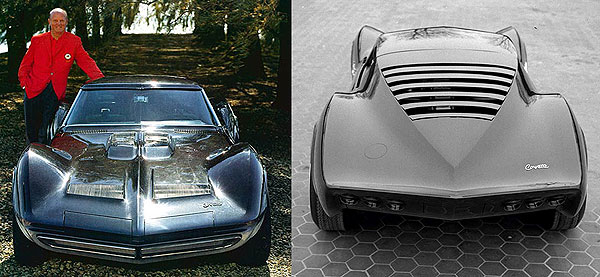
While the Mako Shark II was making its debut at the 1964-1965 New York World’s Fair, work began on a running version, and the production version, scheduled as the 1967 Corvette. Management thought they could take a concept car into production in just 18 months – it didn’t happen. Transforming a show car into the 1968 Corvette took 30-months and in hindsight, should have been a 1969 model.
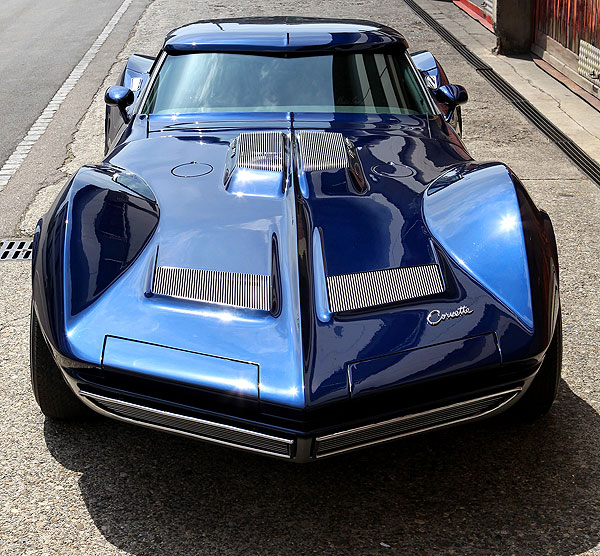
The non-running Mako Shark-II was a hit on the show car circuit and when the running Mako Shark was completed on October 5, 1965, it was dripping with special features, too many to outline here. Days later, Chevrolet debuted the Mako Shark-II at the Automobile Salon Show in Paris, then to London, Turin, Brussels, Geneva, and finally to the New York Auto Show in April 1966. On March 21, 1966 GM filed for a U.S. Patent on the design. The official U.S. Patent illustrations were essential to Hanspeter Bohi’s project, as we will see.
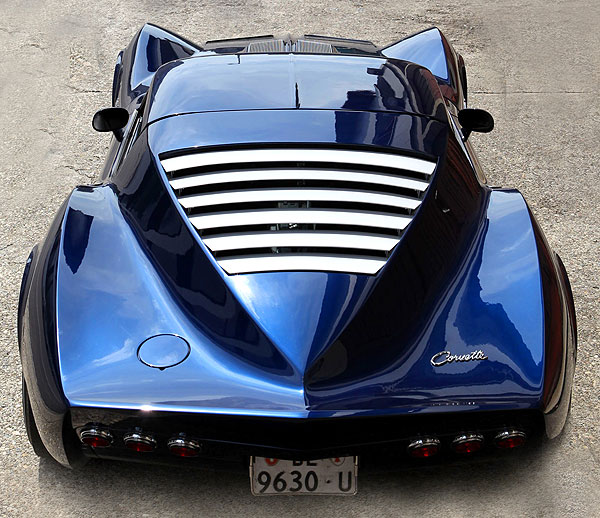
What happened to the non-running and running Mako Shark-II cars? After the running version was completed, the non-running car was brought home and disassembled. After the production 1968 Corvette was released, the running Mako Shark-II was transformed into the 1969 Manta Ray and survives to this day.
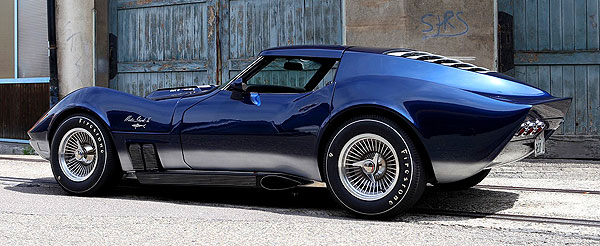
The Mako Shark-II was a hottie, but not everyone was thrilled with the production interpretation, but most Corvette fans liked the car. Kit carmaker John Silva made his “Maco Shark” full-body kit. Joel Rosen of Motion offered his own turnkey Motion Maco Corvettes. As happens with most awesome Corvettes, they fade from glory thanks to their successors. But some fans never forgot or got over the Mako Shark-II.
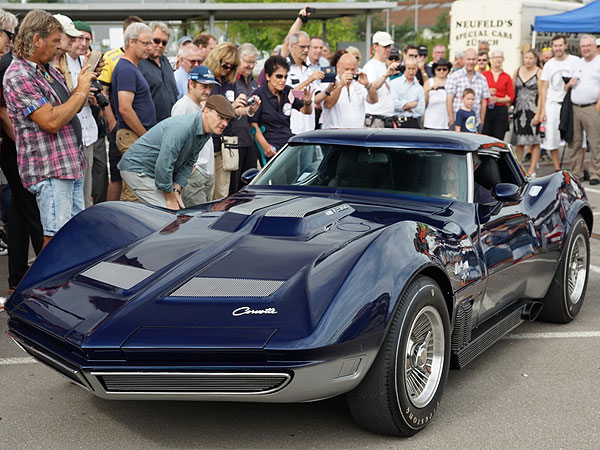
Hanspeter Boehi from Muenchenstein, Switzerland is one such fan. A formally trained auto mechanic in the late 1960s, Hanspeter’s passion was for Corvettes and motorcycles. In 1976 Bohi opened his company, “Speed-Shop Boehi AG” specializing in basket case Corvettes. During his career he has rebuilt C1 to C6 basket-case Corvettes, giving him a thorough knowledge of Corvette mechanics. Hanspeter’s shop grew and in 1988 moved to a larger facility with five lifts in Muenchenstein. Through the years, Hanspeter always owned one or two Corvettes.
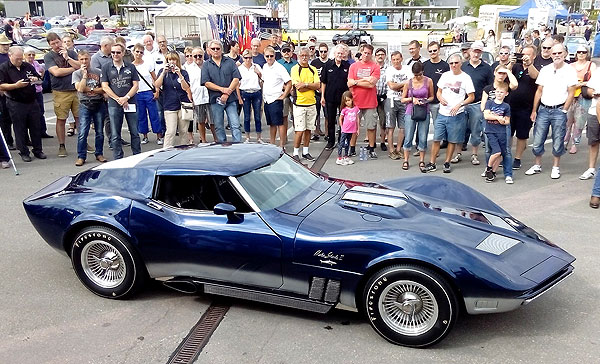
Ever since his first Corvette, a 1970 454 LS5, Hanspeter had his heart set on the Mako Shark-II. In 2004 Boehi launched his project, eventually collecting over 300 images and even photos from when the running Mako Shark-II was in Geneva in 1966! When Hanspeter got a copy of the U.S. Patent, he realized this would be a difficult project, as everything had to be hand fabricated. Boehi decided to replicate the first version, the non-running Mako Shark-II.
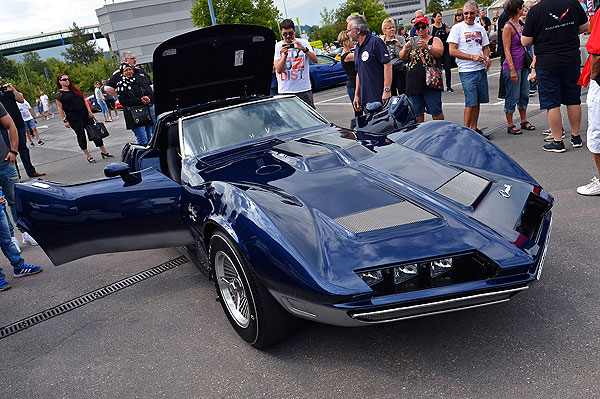
Work began in 2013 as an evenings and weekends project. The chassis is from a 1969 Corvette built to big-block specifications. The LS6 454 engine has Edelbrock aluminum heads, with an original snowflake-type manifold with single Rochester four-barrel carb, mated to a three-speed TurboHydramatic transmission. This was the easy part! What’s so stunning about Hanspeter’s Mako Shark-II is the body. It looks as if he stole the body from Chevrolet back in 1966. Far from it!
H
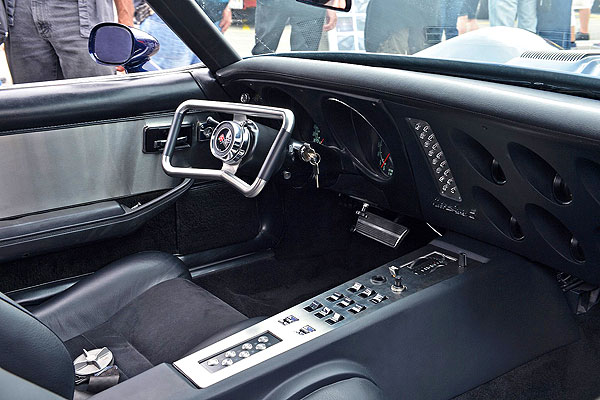
Hanspeter explains; “Starting with the US Patent Drawing, I measured angle distance and curvatures – all the time comparing the shape of the Mako Shark-II on my donor car. Sometimes I fabricated a partial section three-to-five times before I was happy with the shape. Then I would add the new part to the donor car. Every section was made with four-to-five layers of fiberglass, with reinforcements for added strength.”
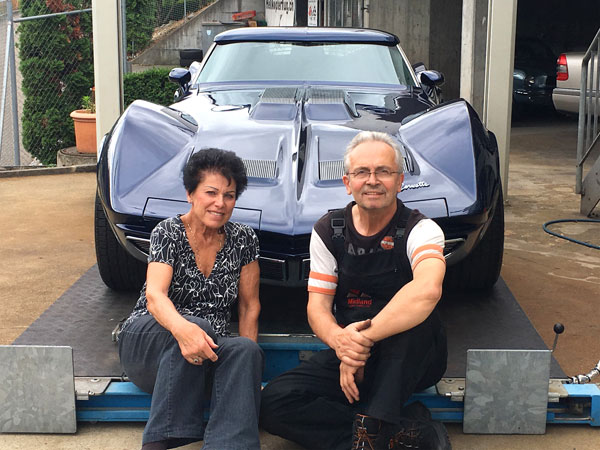
“I started with the rear section lights using 1967 taillights. I patched pieces together for the right and left side, made a negative mold, and then a positive single part. If it wasn’t right, I’d throw it away and start over. When I got it right, I’d take a break, enjoy the finished section, imagine what a wonderful car this would be when finished, and then move on to another section. That’s how I made the entire body and kept my enthusiasm going.”
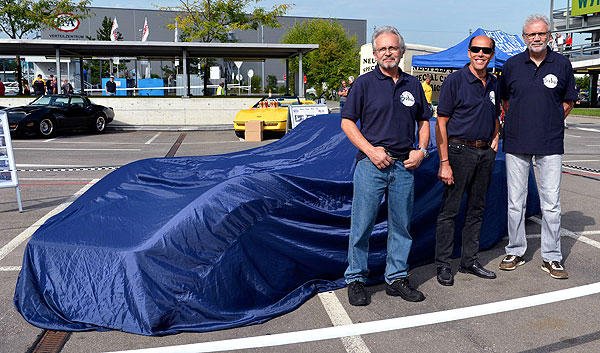
“The really hard work was creating the mounting supports for the headlights and tilt front end. The headlight top and bottom doors took 1-1/2 years to make, and uses four motors. My friend Markus “Bowi” Bowald an electrical engineer, worked out the mechanism so when the headlights are on, the doors open, and close when the lights are off. My friend Heinz Breitenstein, a CAD draftsman and machinist, helped with a lot of the fabrication work for the grille parts, side exhausts, center console, headlight doors mechanism, and Mako Shark-II fender emblem. My part was fiberglass fabrication, engine, transmission, chassis, frame, complete exhaust system and unique air filter box. It would have been impossible to complete this project without my two, well-qualified engineer friends. I spent well over 4,000 hours on the project, plus time from my friends. The money spent was secondary, fulfilling the dream was what pushed us.”
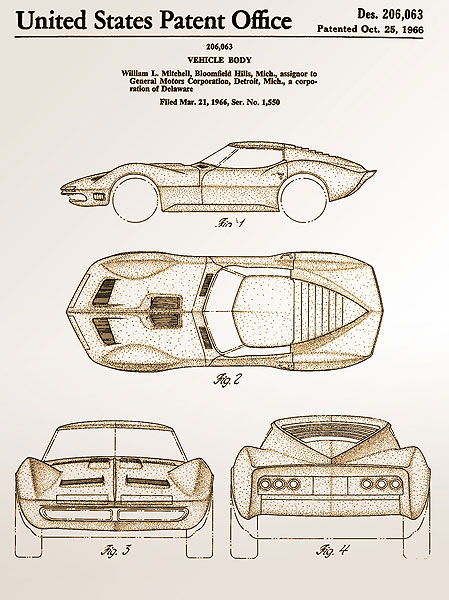
Hanspeter’s Mako Shark-II has lots of special features. When you touch the door handle, the top opens for easier ingress, just like the original Mako-Shark-II. When inside the car, if the top is not secured when the transmission is in drive, a red light goes on. The headlight doors, top, rear louvers and turn signal side doors operate with switches in the middle console. You can change gears with a push button and activate the parking brakes with a push button when the ignition is off. The unique seatbelts are from a set of Boeing aircraft seats. The finned knock-off-style wheels are from a 1982 Collector Edition Corvette, shod with period correct, genuine Firestone racing tires. The tires came in all black and Hanspeter hand-painted the thin whitewall.
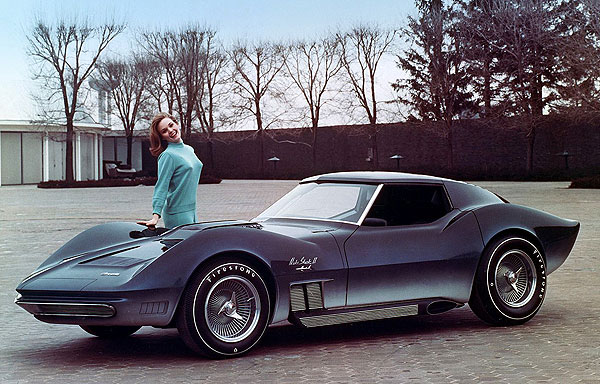
For our readers that are familiar with the Mako Shark-II, you are probably wondering if Hanspeter is planning to offer reproductions of his body molds. Sorry, this is a one-of-a-kind car and he has no plans to sell body kits. The car was built for local events, car shows, and possibly a trip to America. It would be so cool to see Hanspeter’s hand-made Mako Shark-II between the Mako Shark-I and the Manta Ray at the GM Heritage Center. – Scott

Here are some photos of Hanspeter’s 1965 Mako Shark-II build
